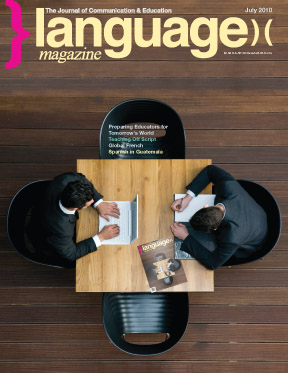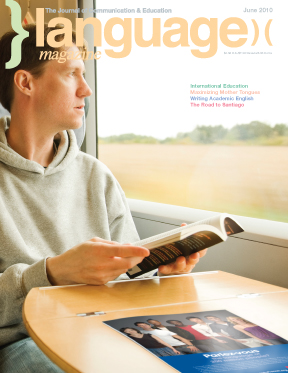Daniel Ward is struck by the natural beauty
and Mayan culture of the country of Eternal Spring

Guatemala, located just south of Mexico in Central America, offers a unique blend of manmade and natural wonders. Visitors can experience glorious ancient Mayan sites nestled within beautiful, lush jungles filled with an extraordinary array of wildlife. Mayan history has been etched into the country, but theirs is a living culture which is developing and driving the economic growth of the country.
Guatemala’s documented history dates back to 10,000 B.C., and some evidence suggests even further. Today, Guatemala has 13 million inhabitants and, while the official language is Spanish, 21 recognized Mayan languages are spoken amongst its people. One of those, Quiché (K’iche’), is the second most spoken language after Spanish and some Spanish language schools offer Quiché language courses for those who want to really delve into Guatemala’s language and culture.
Guatemala is also the perfect place for anyone looking to integrate some adventure into their language studies. Whether it be climbing the ancient Mayan ruins, traversing through its jungles or national forest, exploring its mysterious volcanoes, or lazing on its Caribbean and Pacific beaches, there is something for everyone.
Antigua
Antigua, which is one of the world’s best preserved colonial cities, with its beautiful architecture, cobbled streets, and stunning setting amongst three volcanoes, is renowned for the friendliness of its people. Academia de Espanol Guatemala is endorsed by the Guatemalan Ministry of Education and the Guatemalan Tourism Commission. It offers programs for U.S. university credits and the DELE Spanish diploma. The school features a structured program, designed for each individual student. The teachers at AEG have experience working with diverse students such as families on their way to missions in Latin America, pilots, professional business people, or medical doctors and nurses. Family homestays are reliable as the school has maintained an exclusive, exceptional group of families over the years due to consistent enrollment. Immersion study with experienced families allows students at any level to speak Spanish from the very first day.
Academia de Español Sevilla offers private lessons with professional, qualified and experienced teachers. Students can study from four to eight hours daily, start any day of the year, and have their classes tailored to their own specific needs. Sevilla is authorized by the Guatemalan Ministry of Education, and is also certified by various local universities, and recommended by the Tourism Institute of Guatemala.
Sevilla offers the choice between homestay or student house accommodation where all rooms are private. Students can also participate in cultural activities, including salsa and meringue classes, volcano hikes, and horseback or bicycle tours of the city. The school also encourages students to offer their help to the community through various volunteer projects.
Also located in Antigua is Antiguena Spanish Academy which has been established for 23 years. Authorized by the Ministry of Education of Guatemala and the Tourism Institute of Guatemala, the academy offers Spanish courses for all levels or professions. Students can also combine Spanish courses with volunteer programs at hospitals, schools, or farms. The school provides all study materials as well as activities in the afternoon, such as Guatemalan cooking classes, biking, coffee and macadamia nut farm tours.
ENFOREX has schools throughout Guatemala, each with its own unique charm. The school in Antigua is housed in a renovated colonial building, with a capacity of 80 students. All schools offer private courses, intensive courses, and super-intensive courses for students of varying levels of Spanish.
The Spanish Academy Probigua offers a total immersion experience consisting of private and group courses of three or four students. The program is based on conversation, grammar review, reading analysis, and activities beyond the classroom. As a non-profit organization, the school donates its profits to establish and maintain libraries in the many rural villages with few children’s books.
Quetzaltenango, the second largest city in Guatemala, was founded in 1524 by the Spanish conquistadors. It is an active city with a population made up of 50 percent Mestizo and 50 percent indigenous Mayan. Located here is Celas Maya, a private institution with an intercultural vision, remaining ever-conscious of the economic, social, and political oppression of the Mayan population within Guatemala. It offers intensive, one-on-one Spanish or K’iche’ language classes with a member of staff certified with diplomas in the teaching of Spanish as a second language. By living with a Guatemalan family, students immerse themselves not only in Spanish language but also in cultural experiences that enrich their understanding of the country and culture. With a wide variety of cultural and educational activities, students have the opportunity to learn about Guatemalan culture and society, visit areas outside of Quetzaltenango, practice their language skills, and get to know other students, teachers, and local people. The school also offers the DELE-exam. Students can even learn Spanish through the body with the Spanish and Salsa dancing program. The academy also employs a volunteer coordinator who can advise the student in finding the best possible volunteer placements in the surrounding area.
Quetzaltenango
Also in the Mayan highland city of Quetzaltenango (or Xela “shay-la”), Miguel Angel Asturias Spanish School offers 25 hours of intensive individual Spanish instruction, numerous activities, and homestay with all meals for $150 per week, surrounded by volcanoes, with amazing scenery and hiking opportunities, as well as access to all parts of Guatemala by bus.
The teachers at Miguel Angel Asturias Spanish School have up to 20 years experience teaching one-on-one immersion Spanish, with rigorous training and certification. From absolute beginner to highly advanced, each lesson is customized precisely to the student’s needs. There’s also an extensive library of books, videos, and multimedia that students can use in the school or check out and take home.
A founding principle of their school is to give back to the community, and both of the directors have degrees in economics with a wide variety of experience working with rural communities. They offer the opportunity to share skills, interests, and enthusiasm to helping the people of Guatemala, while practicing and improving Spanish, including sustainable agriculture, photography, teaching, healthcare, agro-industrial co-operatives, rural development, and counseling.
The school also offers a Medical Spanish program which combines intensive general Spanish instruction with specialized instruction focused on medical terminology and situations and is ideal for doctors, nurses, medical school students, pre-med students, emergency medical technicians, and others in the health care fields.
Daily and weekend activities, such as visits to markets and villages, Salsa dancing, conferences and discussions with experts, cultural activities are included. There’s Internet access and Skype in the school, for keeping in touch. Students can also receive university credit for attendance.
Escuela Juan Sisay, surrounded by mountains and volcanoes, offers courses which enable students to speak, read, write, and participate in conversations in Spanish with an emphasis in oral proficiency supported by a strong grammatical foundation. At the same time, students will also be introduced to the social, cultural, historical, and political realities of the country. Students participate in private courses for five hours a day, five days a week. This method of instruction allows each teacher to focus all energies on one students creating a program specifically tailored toward the needs of that students as opposed to a general curriculum for a class.
Each week, a different teacher is in charge of running the week’s extracurricular activities. Activities take place in the afternoons after classes and lunch with host families. These activities are designed to compliment the classes and include conferences, discussions, movies, hikes, and excursions.
With locations in Quetzaltenango, Jutiapa, Huehuetenango, Retalhuleu, and Guatemala City, Instituto Guatemalteco Americano has had 62 years of experience in offering English and Spanish language learning programs. IGA offers programs for children, teens, and adults, with a wide variety of programs and schedules, including daily and weekend sessions. It is also a major teacher training center offering a Teacher’s Training Course and an annual National Teacher’s Conference with the approval of Guatemala’s Department of Education.
Daniel Ward is publisher of Language Magazine.


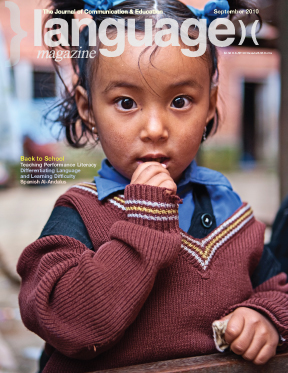

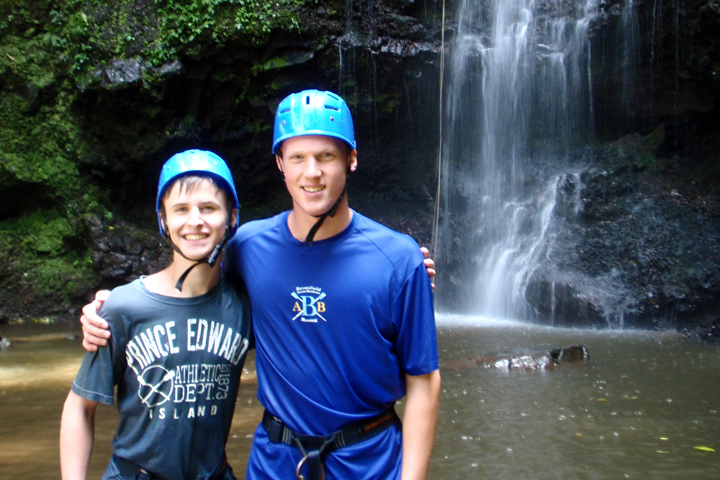
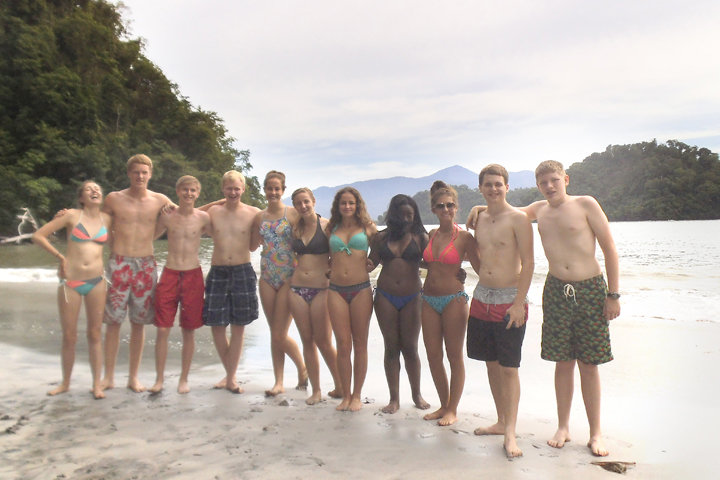

 From Paris’ urban chic through its majestic provincial cities and cherished countryside to the towering Alps and Pyrénées without forgetting the sophisticated beaches of the South, France has so much to offer students in pursuit of acquiring the language of Rimbaud and Rousseau. It is hardly surprising that France attracts more tourists (about 75 million in 2009) than any other country in the world. Paris teems with a multitude of museums, cathedrals, and galleries. The illustrious Louvre houses a trove of historical artifacts and artistic triumphs; enough to keep its visitors busy for weeks. The city’s circuitous streets lend themselves to informal walking tours through jardins and monuments in which getting lost is recommended.
From Paris’ urban chic through its majestic provincial cities and cherished countryside to the towering Alps and Pyrénées without forgetting the sophisticated beaches of the South, France has so much to offer students in pursuit of acquiring the language of Rimbaud and Rousseau. It is hardly surprising that France attracts more tourists (about 75 million in 2009) than any other country in the world. Paris teems with a multitude of museums, cathedrals, and galleries. The illustrious Louvre houses a trove of historical artifacts and artistic triumphs; enough to keep its visitors busy for weeks. The city’s circuitous streets lend themselves to informal walking tours through jardins and monuments in which getting lost is recommended. Portuguese ( português (help·info) or língua portuguesa) is a Romance language that originated from a fusion of the dialect spoken in what is now Galicia and northern Portugal with closely related dialects spoken in territories to the south which had not yet been reconquered by the Christians to the Arabs by the time Portugal was born as a Christian kingdom in the Iberian Peninsula (first half of the 12th century). It is derived from the Latin spoken by the romanized pre-Roman peoples of the Iberian Peninsula (namely the Gallaeci, the Lusitanians, the Celtici and the Conii) around 2000 years ago. It spread worldwide in the 15th and 16th centuries as Portugal established a colonial and commercial empire (1415–1999) that reached from Brazil in the Americas to Goa and other parts of India, Macau in China, Timor (north of Australia) and the five African countries that make up the PALOP lusophone space (Cape Verde, Guiné-Bissau, São Tomé e Príncipe, Angola and Mozambique).
Portuguese ( português (help·info) or língua portuguesa) is a Romance language that originated from a fusion of the dialect spoken in what is now Galicia and northern Portugal with closely related dialects spoken in territories to the south which had not yet been reconquered by the Christians to the Arabs by the time Portugal was born as a Christian kingdom in the Iberian Peninsula (first half of the 12th century). It is derived from the Latin spoken by the romanized pre-Roman peoples of the Iberian Peninsula (namely the Gallaeci, the Lusitanians, the Celtici and the Conii) around 2000 years ago. It spread worldwide in the 15th and 16th centuries as Portugal established a colonial and commercial empire (1415–1999) that reached from Brazil in the Americas to Goa and other parts of India, Macau in China, Timor (north of Australia) and the five African countries that make up the PALOP lusophone space (Cape Verde, Guiné-Bissau, São Tomé e Príncipe, Angola and Mozambique).